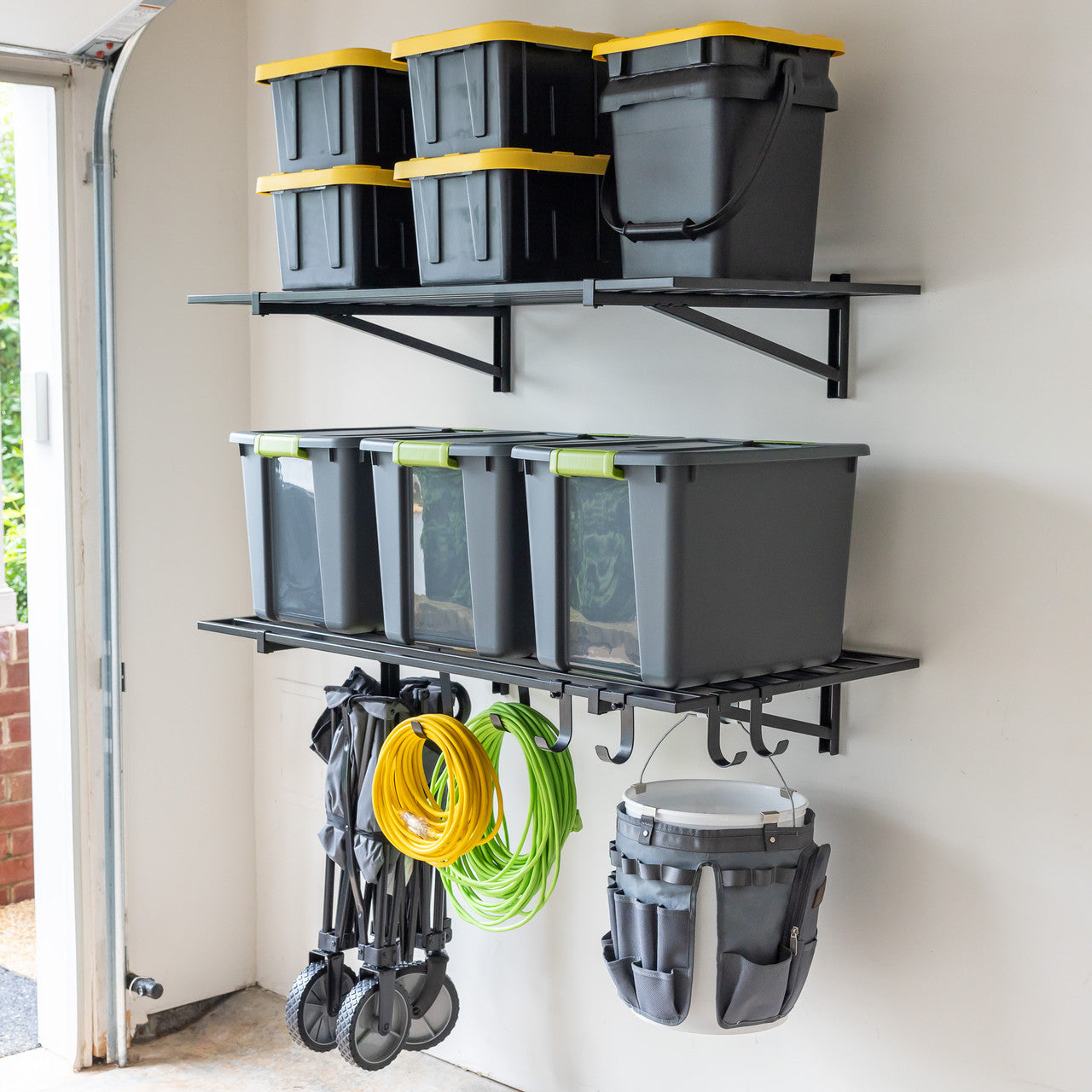Ideas & Advice
When it comes to organizing your garage, it’s easy to feel overwhelmed, especially if you’re storing bulky gear like kayaks, bikes, and seasonal equipment. Whether you’re short on space or just need to create a more efficient system, having the right setup can make a big difference. In this blog, we’ll share creative ideas and expert advice on how to maximize your garage space, from wall-mounted storage solutions to ceiling racks and freestanding units. Plus, we’ll provide guides for safely storing larger gear like kayaks and bikes. Let’s get your garage in top shape!
Wilder Family: Garage Makeover
The Wilder family, with their busy schedules and a house full of kids, needed a solution to keep their garage under control. Their space was packed with everything from sports equipment to seasonal items, making it difficult to stay organized.
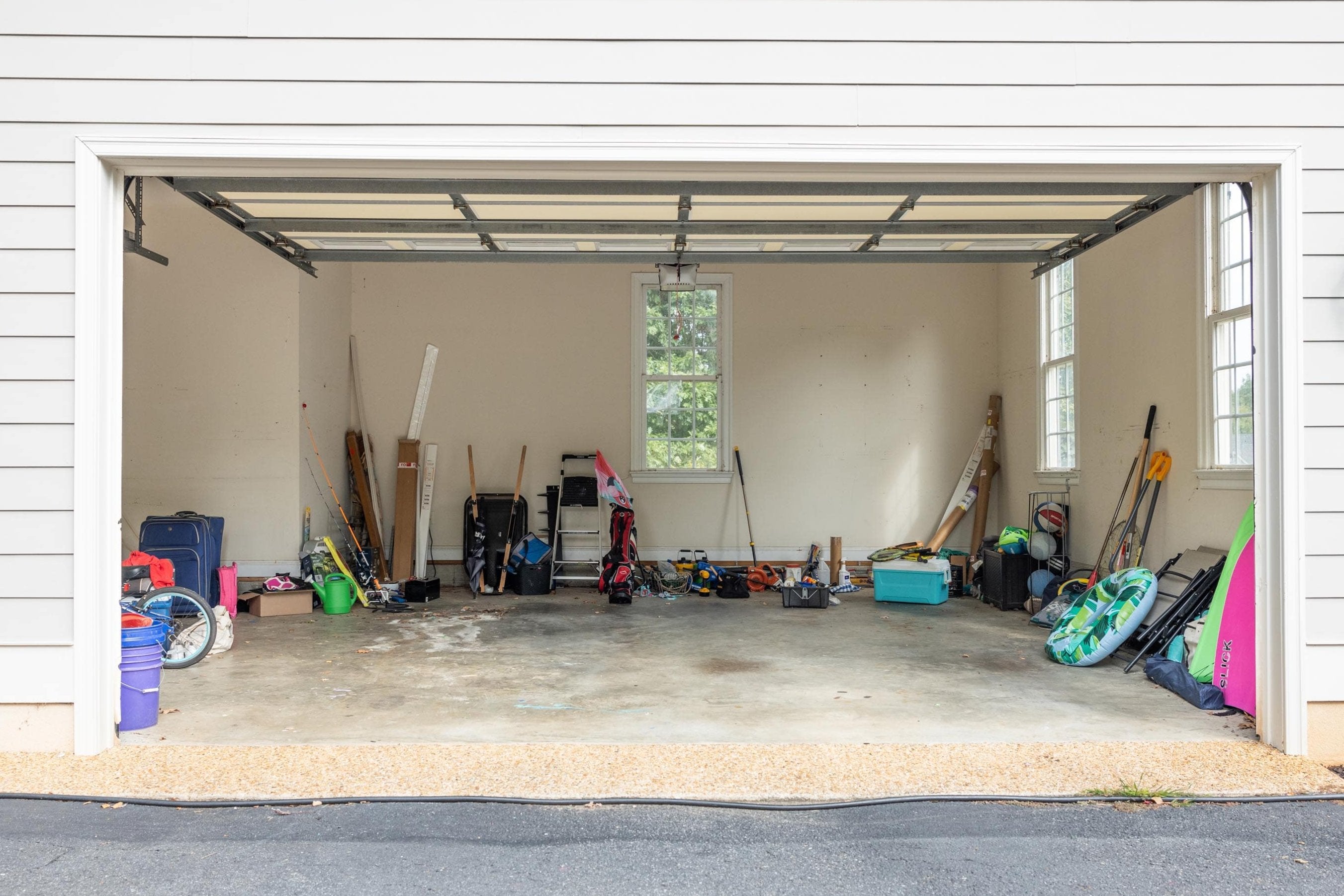
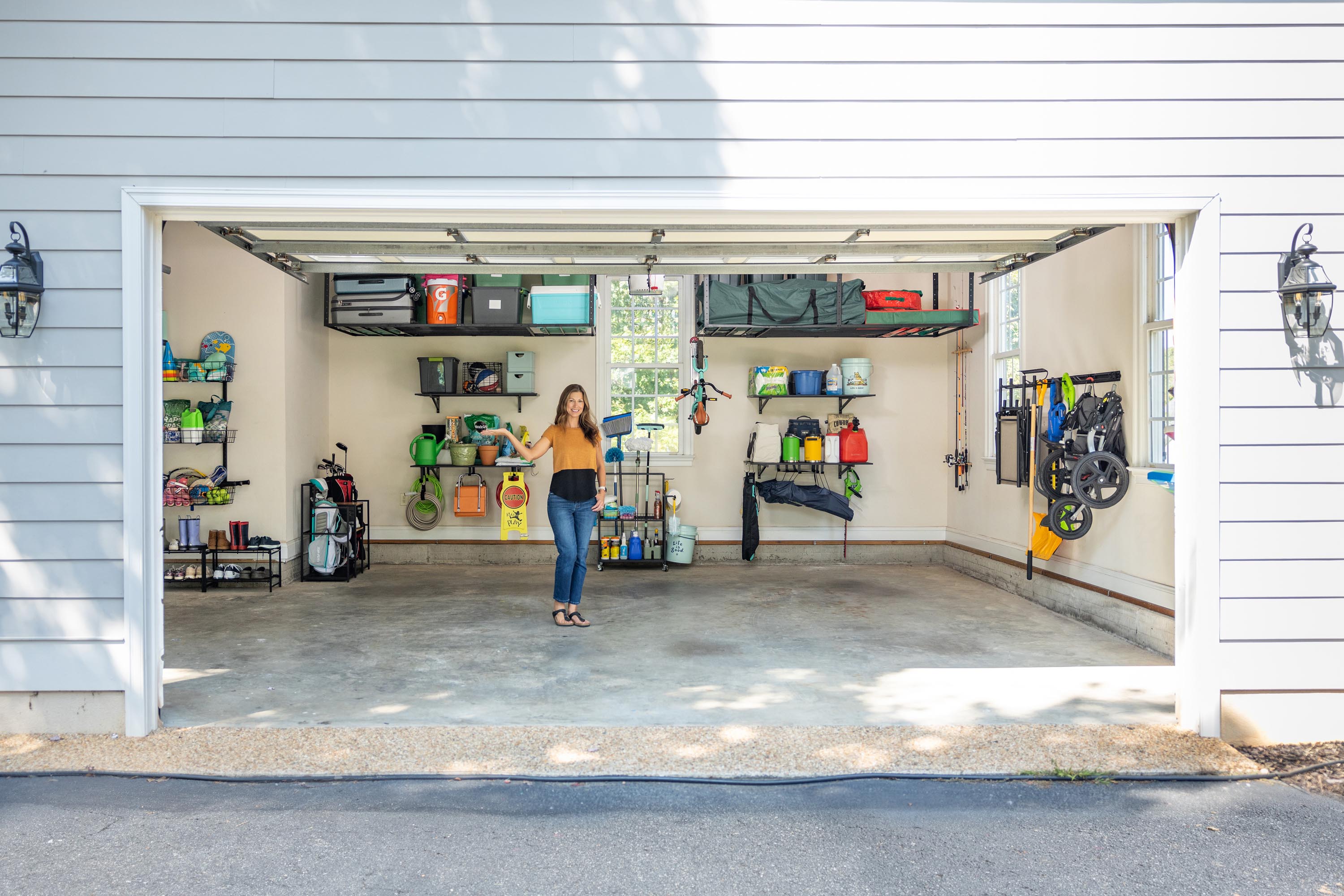
Snow Family: Before & After
We helped the Snow family transform their cluttered garage into a functional space that supports their busy lifestyle. With a few smart upgrades, their garage became a game-changer for their daily routines.
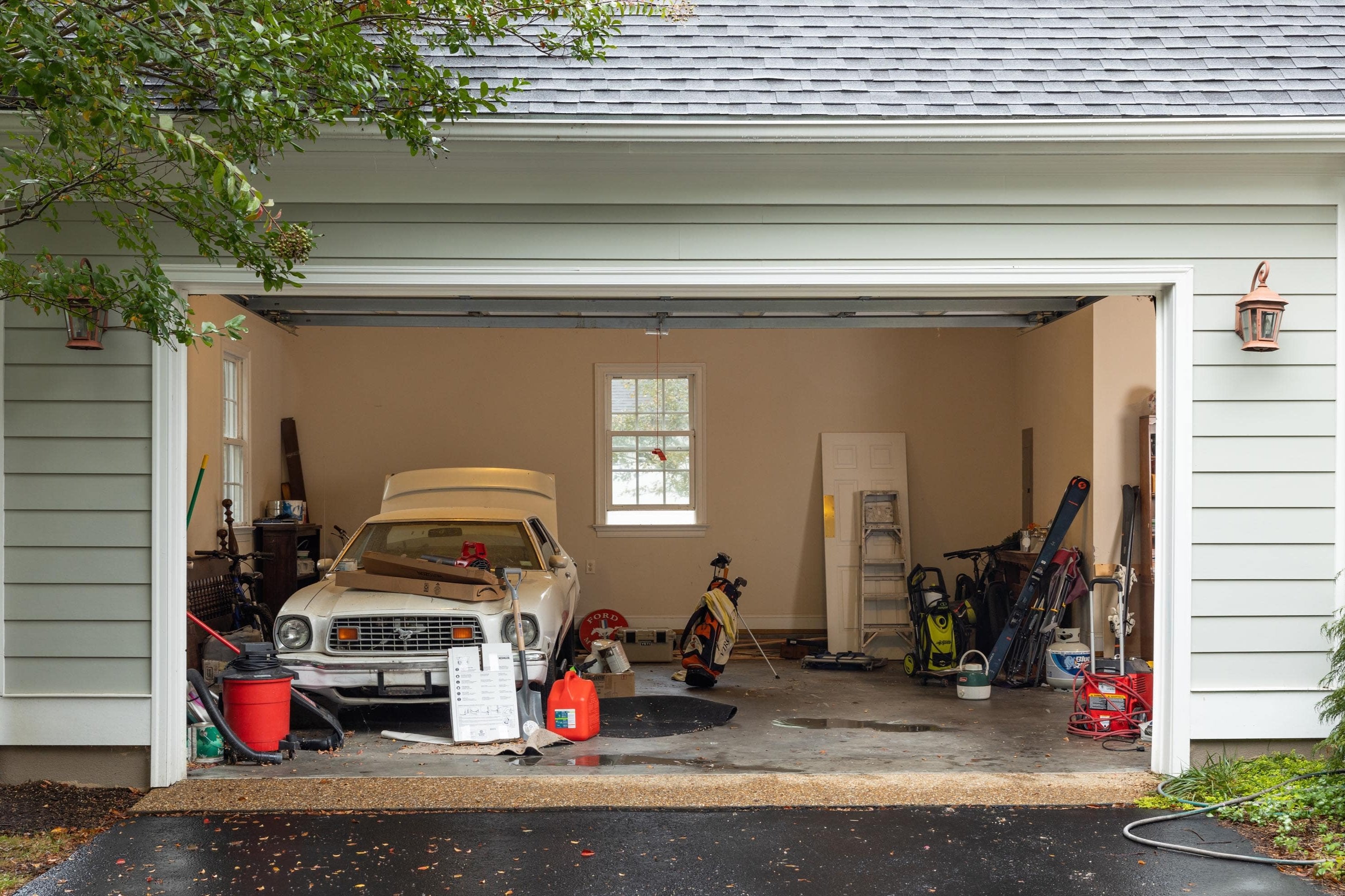
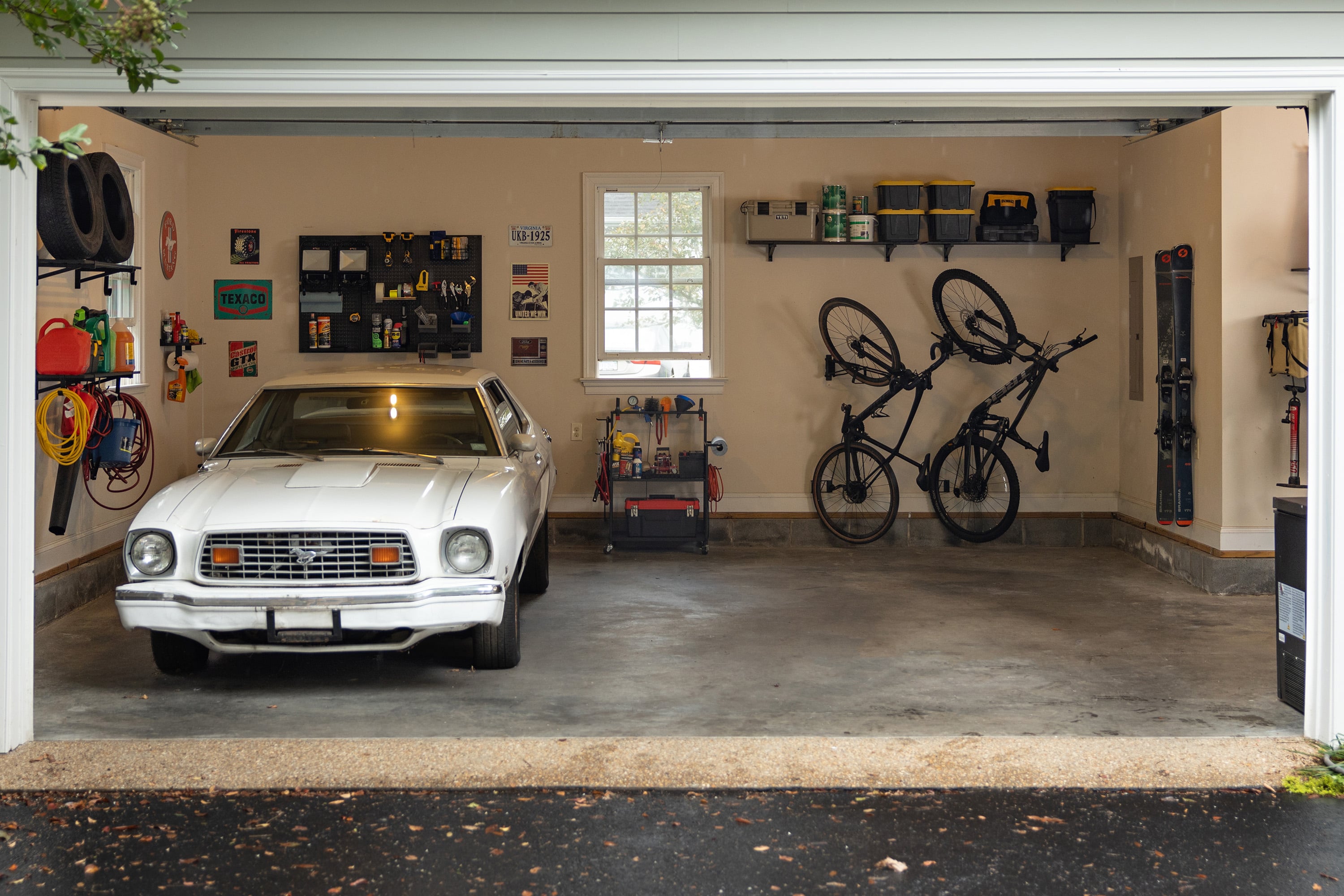
Wright Family: Before & After
With bins, boxes, and bags full of seasonal gear, the Wrights needed high-capacity garage storage. We transformed their space by taking advantage of the most underused part of the garage.
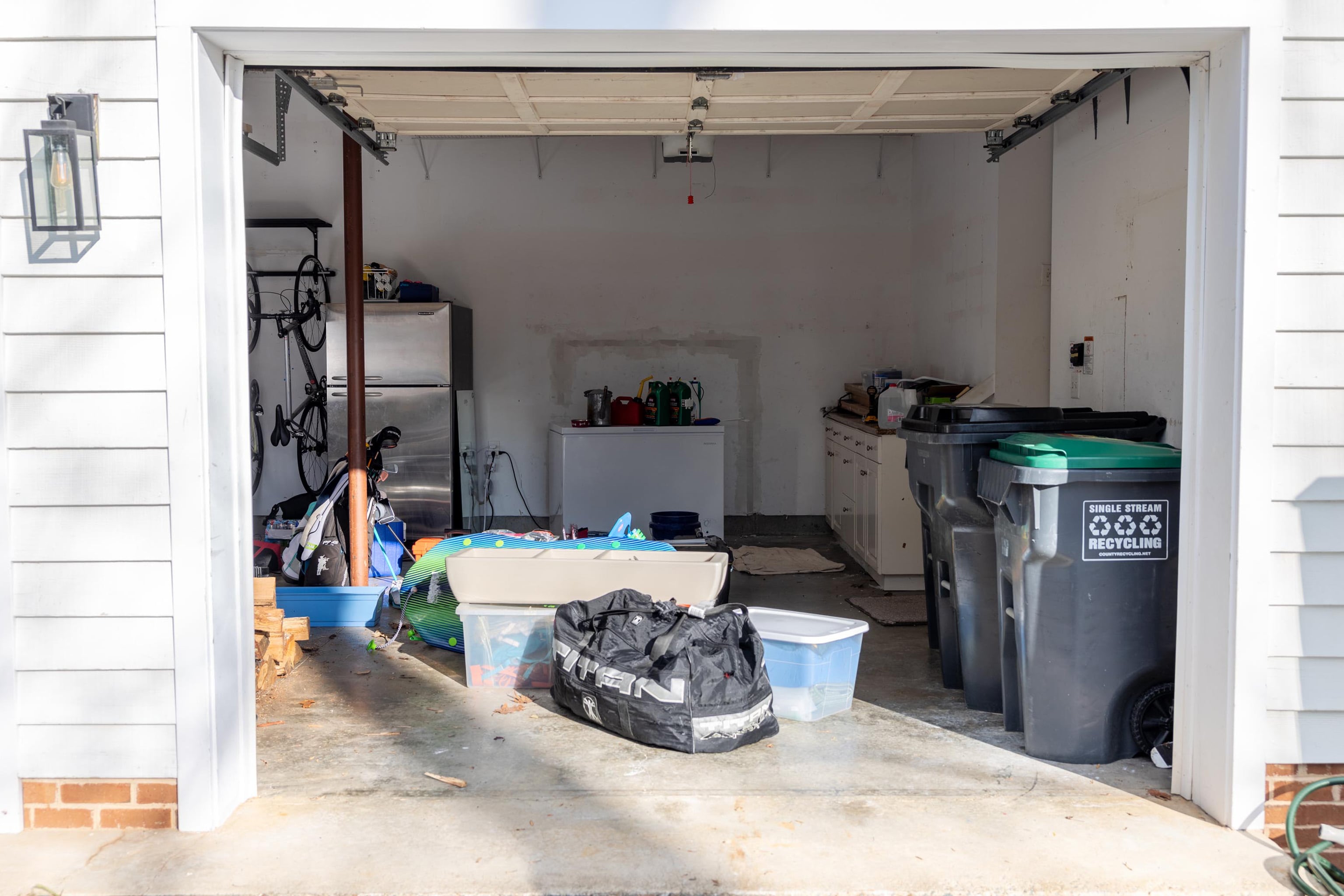
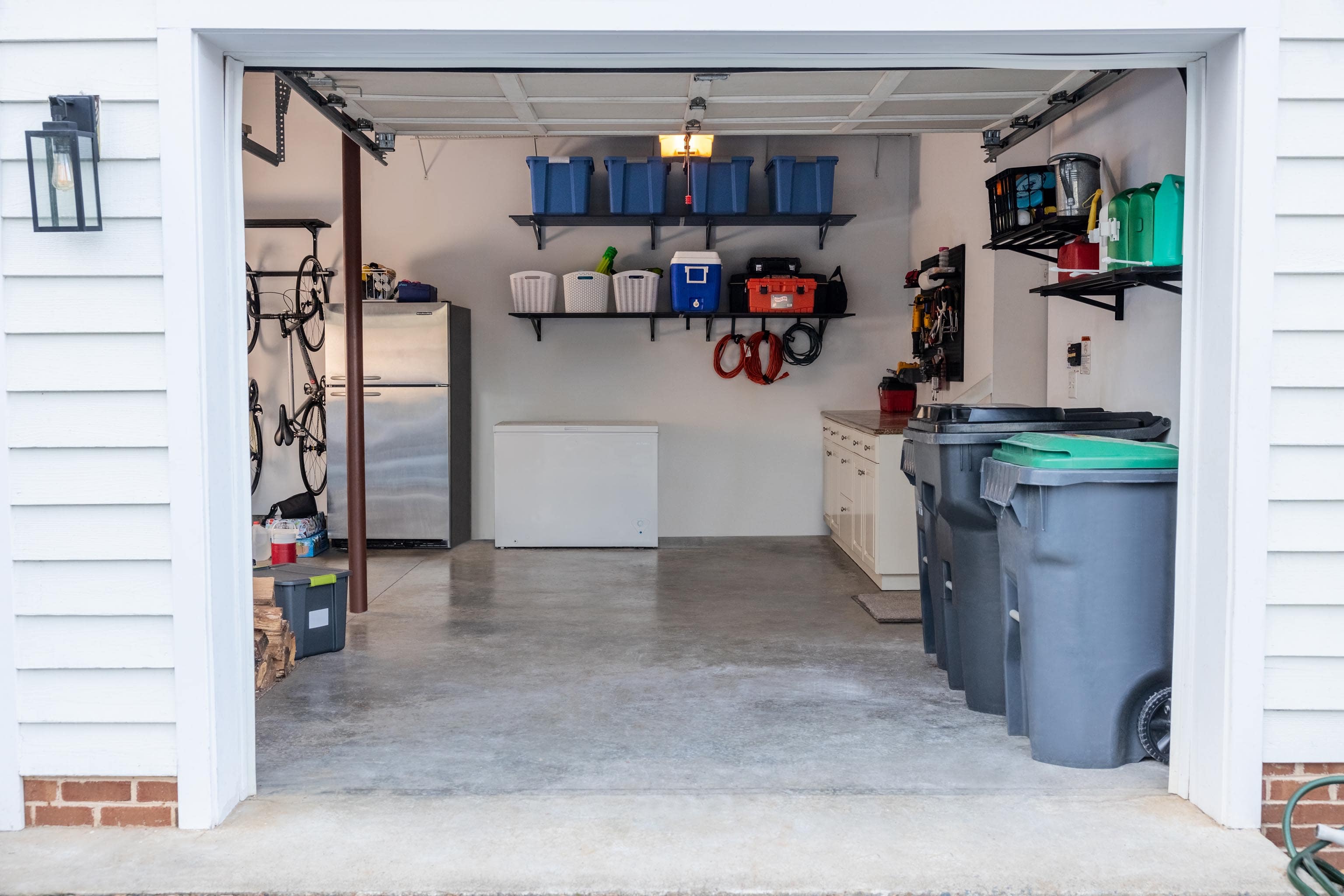
Legacy Articles
Pro Skateboarder Christian Hosoi
Pro skateboarder Christian Hosoi has long been one of the more controversial figures in the sport. Born in 1967, he was known by the nicknames “Christ” and “Holmes” during his childhood and adolescence. Among pro skateboarders, Hosoi was one of the youngest to start skateboarding, at the age of five. Already by this age, his idols were skateboarding veterans like Tony Alva and Stacy Peralta, who were at the center of 1970's skateboarding culture. Christian’s father, Ivan “Pops” Hosoi, became the manager of the Marine Del Ray skatepark soon after his son began skateboarding seriously. Christian would later quit school to spend all of his time at the skate park, developing his skating skills. His first major competition was the Van’s Offshore Amateur State Finals in California, where he placed in the top 5 of the boys 11-13 division in 1980. While still classified as an amateur, Christian was sponsored by Powell Peralta, a top name in the sport. Just a year later, he left Powell Peralta, as they would not allow him to turn pro. He then joined Dogtown Skateboards, one of the original names in the sport. Unfortunately, they went out of business shortly after he joined. At the age of 14 in 1981, he finally turned pro, sponsored by Sims Skateboards. Once he turned pro, Hosoi became a top competitor in the world of vert skateboarding, joining popular pros of that era like Steve Caballero and Mike McGill. His major competition wins began in 1985 and lasted through 1988. He would eventually develop a rivalry with fellow pro skateboarder Tony Hawk. In the 1980s, he and Hawk would become known as the top names in the competitive skateboarding industry. While Hawk is known for his technical ability when performing difficult tricks, Hosoi is known for a graceful style and unique flair. Hosoi is credited as the inventor of the Christ Air and Rocket Air tricks, and is also known for his huge aerials. At one point he was the world record holder for aerial height on a skateboard. As a pro skateboarder, Hosoi earned major endorsements from companies like Converse, Swatch. Several ‘Christian Hosoi Pro Model wheels have also been released. In 1984, Hosoi founded Hosoi Skates, selling a very popular skateboard. By the early 1990s, the world of skateboarding had turned its attention to street skateboarders. As a vert skateboarder, Hosoi found himself winning competitions less and less often. After being involved with a series of failed skateboard companies, he faced bankruptcy, as well as a growing addiction to drugs. He stopped entering competitions, and even declined an invitation to the very first X Games competition, then known as the Extreme Games. Charged with trafficking meth in 2000, he served four years in prison, and was released in 2004. While in prison, he married his girlfriend, Jennifer Lee, and became a born-again Christian. Today, Hosoi and his wife have two sons, and Christian has earned his high school diploma, since he had dropped out to devote more time to skateboarding at his father’s skatepark. He lives in Huntington Beach, California, long the center of skateboarding culture. Hosoi has resumed his skateboarding career, taking 1st at the 2009 X Games 15 “Skateboard Park Legends” contest, where he was invited to compete as a well-known name from the history of the sport. Shop our skateboard collection for storage that shows off your boards.
Learn morePro Skateboarder Bam Margera
Bam Margera, whose birth name was Brandon, was born in 1979 in Pennsylvania. He earned the nickname “bam” from his grandfather after his habit of running recklessly into walls. Bam learned to skateboard in 1988. Today, he is known as one of the most interesting if not controversial characters in the skateboarding world, and has made skateboarding and stunts a way of life. Bam is known as a stuntman, director, actor, and skateboarder. Somewhat of a daredevil, he rose to prominence as part of MTV’s “Jackass” crew, known for outrageous and dangerous stunts caught on camera. His other works include MTV’s “Viva La Bam” and “Bam’s Unholy Union,” both reality shows following Bam produced under the Jackass label. After learning to skateboard, Margera began to film his skateboarding stunts and the tricks performed by his friends. These tapes eventually became the CKY video series, which currently includes four videos. His friends formed a loose skateboarding group known as the CKY Crew; his brother Jess is in a rock band also known by the name CKY; this band can be heard on CKY videos. After the success of the CKY project, the former editor of the Big Brother reality TV series brought him on board for the team that would become Jackass. Other CKY crew members, including Ryan Dunn and some of Margera’s other friends, also appear in Jackass shows. The TV show spawned two moves, “Jackass: The Movie” and “Jackass: Number Two.” After Jackass, Margera had his own MTV series, known as Viva La Bam. This reality TV show, which ran between 2003 and 2005 for five seasons, followed Margera and his friends, filming them as they performed various stunts, including many on skateboards. He has also written, produced, and starred in three independent films. His later production efforts include a Sirius Satellite Radio Show broadcast weekly known as “Radio Bam.” He has also started a music label and has directed several music videos. Margera is known not only for his crazy behavior and stunts but also for his skateboarding skills. Pro skateboarder Tony Hawk included Margera as an animated skateboarding character in his popular video game line, including the Pro Skaters and Underground series, which also feature other top names in the sport as animated characters. Bam was married in 2007 to Melissa “Missy” Rothstein. The engagement and wedding was filmed for the MTV series “Bam’s Unholy Union.” The couple currently resides in a large house in Pennsylvania known as “Castle Bam.” The “castle” boasts a gothic theme and sits on 14 acres, with a skate park in the drive way. In 2007 Bam built a large skateboarding ramp on this land. In addition to his TV and filmmaking career, Margera is also a popular skateboarder in his own right. Bam is a member of Team Element, demonstrating tricks for Element Skateboards. He also has numerous other sponsors, including Destructo Trucks, Speed Metal Bearings, Electric Visual, Fairman’s Skateshop, Jones Soda, CKY, Volcom, Spitfire, and more. Though he has stayed away from the larger skateboard competitions and is not usually considered one of the top professional skateboarders in terms of skill level, he is considered to be “pro” status due to his sponsorships. Shop our skateboard collection for storage that shows off your boards.
Learn moreThe Potential for High School Skateboarding Teams
Compiled by a StoreYourBoard Skating Enthusiast Did you know that skateboarding is very close to becoming a recognized high school sport? The National High School Skateboarding Association, launched in 2007, is working to make skateboarding a team sport in high schools across the country. Many see this step as fundamental in making skateboarding a mainstream rather than counterculture sport. The first season of team high school skateboarding, in 2007, was known as the California High School Skateboarding Club. Though it began small, it received widespread attention. This club was soon contacted by people all over the country who wanted to begin similar skateboarding teams at high schools nationwide. For the 2008 season, more than 20 high school teams signed up to compete throughout Southern California, and the name was changed to the National High School Skateboarding Association to reflect the national attention the movement had already received. In 2009, there were over 45 teams competing in three regions: North, Central, and South Los Angeles. Though the movement is still centralized in California, not surprising considering the lengthy history of skateboarding there, the movement is poised to explode throughout the nation in the coming years. Soon you may see a competitive skateboarding team at a high school in your town. The current competitive skateboarding season includes two competitions in the regular season, with the winners advancing to additional competitions at the semi-final level. The top individuals at the end of the season can potentially win an invitation to compete in the X Games, one of the sportÕs most prestigious competitions. NHSSA provides a valuable platform for young skateboarders looking to get their talents seen by big names. The mission of the National High School Skateboard Association, or NHSSA, is to provide an environment for high school skateboarders to showcase their skating talents while still in school. The NHSSA believes that young skateboarders, like all other young athletes, need an outlet to compete and reach their full potential. The NHSSA supports skateboarders who want to take their abilities to the next level professionally, those who want to have a career in the skateboard industry, and those who simply enjoy skateboarding as a hobby. Though this movement has received widespread attention, it is actually not the first attempt at competitive high school skateboarding teams. In fact, the idea goes as far back as the 1970s, the era of team skateboarding. In this era, skateboarders would often affiliate themselves with their local surf/skate shop, forming teams that would travel throughout California, competing for bragging rights. Though most of the competitors were high school students, teams were affiliated not with high schools but with skate shops. With the National High School Skateboarding Association, it is clear that skateboarding is here to stay. This popular sport is on the cusp of becoming widely recognized as a high school sport. In future decades, it may become possible for teens across the nation to join a competitive high school skateboarding team. Still, the prospect of team skateboarding is not attractive to some young skateboarders, particularly those who skate with an individualist spirit and resist becoming part of an organized group, instead preferring skateboarding to remain counterculture. Shop our skateboard collection for storage that shows off your boards.
Learn moreSkateboarding in Japan
Although skateboarding may seem like a purely American invention, and in fact the sport was created in sunny California, this activity has spread worldwide since the 1970s. In fact, skateboarding is quite popular in Japan. The burgeoning Japanese skate scene is definitely worth checking out if you are a skateboarder who happens to be traveling to Japan. Skateboarding in Japan is absent much of its ‘counterculture’ edge. In fact, most skaters in Japan are clean cut, not “punk.” Some have noted this attitude to be the biggest difference between Japanese skateboarders and those in the west. Still, skateboarding in Japan still has some of its “bad boy” image, especially as cops begin to crack down on skateboarders, but even the punk or tough-looking Japanese skateboarders tend to be polite and well-mannered. Unlike in America, where the vast majority of skateboarding takes place outdoors, in Japan there are quite a few indoor skate parks. Land is very expensive in Japan, and many of these skate parks have been set up in warehouses. These large warehouse skate parks can only be found in the largest cities; elsewhere, there just aren’t many areas where skateboarders are allowed, though there is plenty of concrete to attract them. Many wonder if Japan will begin providing public skate parks as skateboarding becomes more and more popular there. Another downside is that many large Japanese cities, especially Tokyo, are very congested. Even if you were to find an interesting area to skate, it’s not likely to ever be deserted enough for you to be able to skate there. Plus, “no skateboarding” signs are showing up all over the country, and police are cracking down on this trend. In Japan, there just aren’t that many places to skate. Another factor making it more difficult for Japanese skateboarders getting involved in the sport is the price of boards, wheels, bearings, and wax. Though there are a few Japanese skateboarding brands, most skateboarding products still cost more in Japan than they do here in America. You’re actually more likely to find a board by looking in a second-hand shop than you are by looking for a skate shop. Skateboarding is quickly growing in popularity throughout all of Asia. Still, it has a ways to go before it reaches the same level as American skateboarding. In fact, many high school students in Japan don’t recognized skateboarding as a popular sport, while in America one survey ranked it as the 3rd most popular sport. While it is still catching on among youth, skateboarding has already spawned skateboard companies and magazines in Japan, including an official association known as the All Japan Skateboard Association, which was founded in 1996. In Japanese, a skateboard is known as a sukeetoboodo. Skateboarding is sukeetoboodingu, though within a group of skateboarders it might be referred to simply as “sukebo.” A skater is a Suke-ta, or a “Suke-tobo-do yatteru hito,” which is literally translated as “a person who skateboards.” The American slang terms ‘awesome’ or ‘sick,’ often heard from skateboarders, translate to ‘sugoi.’ Shop our skateboard collection for storage that shows off your boards.
Learn moreSkateboarding Gift Ideas
Shopping for a teenage guy? As you’ve probably realized by now, teenage boys are hard to shop for. The changing trends make it hard to choose something they will love. Most teenage boys today love to skateboard. So do girls, in fact, and many people who have passed their teenage years. This very popular sport is growing each and every year, and more and more companies are producing skate gear. If you’re looking for a great gift for a skateboarder, consider the following options: 1) Skateboarding clothes. Many skateboarders wear skateboard shoes and other apparel from popular skate brands every day, even when they aren’t skating. A backpack or beanie hat with skateboarding company logos also makes a great gift. Skateboarding clothes can be found in skate shops, sporting goods stores, and even some department stores. This look is very popular, even for those who don’t skate at all. 2) A skateboard. If you do know what kind of skateboard the recipient wants, buying a new skateboard is probably the best gift you can give. However, be sure you know exactly what you’re looking for. The brand and size of the board makes a big difference to skateboarders. If in doubt, choose a gift certificate, or place a picture of a skateboard in a box and tell them you’ll purchase the board of their choice. 3) Skateboarding equipment or gift certificates. Though you may feel that you don’t know enough about the sport to buy a complete skateboard for a gift, there are plenty of skateboard accessories that every skater needs, like grip tape. Worried about the skateboarder’s safety? Select a helmet and a set of pads. This may not be the coolest gift, but at least it will keep your skateboarder safe. You could even pick up a gift certificate to a local skate shop so that they can find their own equipment if you feel bewildered by the choices that you see. 4) Magazine subscriptions. Popular skateboarding magazines profile pro skateboarders, demonstrate new tricks, and review the latest skateboarding equipment. A subscription to one of these magazines is sure to be enjoyed all year round; the magazine will probably even get passed around to all of the recipient’s skateboarding friends. This is a great choice if you’re not sure what equipment they already have for skateboarding. 5) A skateboard rack. Are you tired of tripping over your kid’s skateboard every time you enter their room? Keep it off the floor by giving a skateboard rack for the next gift-giving occasion. Skateboard racks are a perfect choice for most skateboarders, as it’s something they will rarely buy themselves, but something that every skateboarder can use. Skateboards left on the ground may get tripped over or even broken. Skateboards cost a lot of money; riders should protect them by keeping them off the ground using a skateboard rack. Shop Trifecta Skateboard Rack Skateboard racks also give the skater in your life the opportunity to show off the designs of their boards. From multi-skateboard racks to floating deck displays, they can turn their favorite pastime into room decor. Shop Floating Skateboard Deck Display Since skateboarding has become more popular, there is a good chance that someone you know would love a gift of skateboarding accessories. Show the recipient that you support their favorite hobby by picking out one of these must-have skateboarding items. From skateboarding clothes to a rack to hold their new skateboard, these skateboarding accessories are sure to please. Shop our skateboard collection for storage that shows off your boards.
Learn moreThe New Sport of Freeline Skating
In the world of extreme sports, freeline skates are relative newcomers. Designed in 2003 in San Francisco, inventor Ryan Farrelly was trying to design a better version of skates for downhill racing. Freeline skates were borne of the idea that instead of standing on a platform on top of wheels, the rider can simply stand on each set of wheels, doing away with traditional skate construction. Unlike regular skates and blades, these are not strapped to the rider’s feet. Freeline skates are specifically designed to give the feeling of skateboarding, surfing, and snowboarding, all at the same time. A pair of these skates consists of two separate metal plates with two wheels attached to each plate using a specially-designed truck, similarly to how skateboard wheels are attached to a skateboard deck. The wheels are shaped on both sides, rather than just one side like standard skateboard wheels. Otherwise, the wheels appear to be quite similar to those used on skateboards. The aluminum plate is covered in grip tape, the same material that helps skateboarders’ feet grip their skateboards. Overall, the freeline skates look much like two miniature skateboards with dual independent wheels. New versions of freeline skates are being introduced each year as understanding of the sport develops and more people are drawn to it. This history closely mirrors the early history of skateboarding and other extreme sports, when multiple varieties of skateboards were developed, often vastly different from each other. The technique used to skate with freeline skates is unlike any other sport. It is known to be quite challenging to learn, even for those who are familiar with other extreme sports. Even if you already know how to skateboard, snowboard, or surf, check out freeline skates for a unique challenge. Difficult to master, there are even YouTube instructional videos to help seasoned skateboarders or snowboarders get the hang of this new style. Freeline skates are known for high traction on level ground and uphill, and these skates can be used almost anywhere. Freeline skates are used most often on slight downhill slopes, and utilize many of the same movements of other extreme sports, while adding a unique twist. This challenging sport provides great opportunities to use your skills in a new manner of riding and invent new tricks. When riding, skaters take a sideways stance, similar to the stance used on a snowboard. Freeline skates are propelled similarly to snowboards, as riders shift their weight from heel to toe to change direction. Turns using freeline skates create an ‘S’ shape. One of the newest innovations in the world of extreme sports, freeline skating is a whole new way to propel yourself on wheels. This new style of extreme sport has been recommended as a way for snowboarders to keep up their skills during the summer months, and is also a fun activity for anyone who enjoys skateboarding or surfing. These portable devices are also the smallest and lightest form of wheeled transportation currently available. Looking for a new challenge? Try freeline skates, the newest invention in the extreme sports world.
Learn moreCollecting Vintage Skateboards
Skateboarding today is a very popular sport, and many who are involved in it, whether they are riders themselves or simply spectators, collect vintage skateboards. These relics of the 1960s, 1970s, and 1980s, go back to the earliest forms of the sport. Many skateboards from this era look nothing like modern boards. Called “old school” by modern skateboarders, vintage skateboarding decks have a great aesthetic that is a lot of fun to display in your home. When collecting vintage skateboards, look for brands or styles that were very popular in their day. Many of these were created by the sport’s earliest pros, such as Stacy Peralta, who sold his board designs under the “Powell Peralta” brand name. Today, these boards often sell for upwards of a thousand dollars. These high-end boards from the past are hard to come by. Not only are they prized by collectors, but they were also produced in very small quantities. During the sport’s infancy, there simply were not as many skaters around. Those who did purchase boards often did not have the money to invest in high-end boards; these kids were working odd jobs like mowing lawns to save up the money to buy themselves a board. Now collectors’ items, vintage boards went through several incarnations before settling on the size and style of a modern skateboard. For example, those made from the 1950s through the 1970s were shaped more like a surfboard, and constructed of solid wood or plastic. A few even had metal decks. Most were only six or seven inches wide, and had clay or metal wheels that were originally designed for roller skating. Skateboards produced in the late 1970s, the second incarnation of boards, use modern urethane wheels rather than clay or metal wheels. Incorporating trucks and other components that are much closer in style to modern skateboards than those produced in the 1950s through the early 1970s, these boards often had decks made of polypropylene, fiberglass, or other modern materials, though maple plywood was the most popular material. The 1980s is known for boards with creative artwork. During this era, many top skateboarders owned their own skateboard companies or provided creative input for board design. These boards are among the most popular for collectors because of their individualist style. Some were even produced in limited editions, making them even more difficult to come by today. Vintage skateboard collectors consider not only the skateboard style and its rarity, but also its condition. The most prized vintage skateboards are those that are still usable, though most collectors display them rather than using them. Their wheel design was much harder to control than those on modern boards, so you may find it difficult to ride a vintage board even if you are a skilled skateboarder. Today’s skateboards, in contrast, use modern materials and have trucks and wheels that have been designed specifically for skateboards, making them easier to ride. If you like the vintage style but don’t necessarily want a skateboard that is several decades old, consider a reissue of a vintage “old school” skateboard. These are great for skaters who love the look and feel of the older boards, but don’t want to purchase an original, or can’t find an original issue of the board they want. Once you've started your vintage skateboard collection, put them on display with skateboard racks that double as storage and decor.
Learn moreMusic and Skateboarding
Music has always been involved in the world of skateboarding since its earliest history. The counterculture of skateboarding, in fact, is known for its wide variety musical styles. Today, there are several different genres that are closely identified with skateboarding. The music most identified with the sport tends to have a fast beat to pump up your adrenaline while skating. Since skateboarding grew out of surfing culture during the 1950s and 1960s, it follows logically that the music and culture of skateboarding was originally quite similar to that of surfing. However, skateboarding would soon be seen as more counter-culture than surfing, and began to develop a rebellious attitude displayed through clothing and music. This punk influence is still quite evident in today's skateboarding culture. One of the first music styles to be associated specifically with skateboarding was reggae. In the late 1980s, the SMA Rocco Division skateboarders, including Jesse Martinez and Jef Hartsel, helped to usher in the emerging reggae-skateboarding culture. The song “I N I Style” was credited to Jef Hartsel and fellow skateboarders from Rocco, Jamie Zebulon and Albert Naphtali. Throughout the late 1980s and early 1990s, several of those involved in the skateboarding industry recorded reggae-style songs. While skateboarding has traditionally been associated with punk or rock music, recently hip-hop and street culture have embraced the sport, having a huge influence on the music enjoyed by skateboarders. Today, skateboarding has grown to encompass a diverse fusion of cultures, including punk, hard rock, street, and hip cop culture. As a result, there is a wide variety of musical styles that are enjoyed by skateboarders around the world, though there is also a style popularized in skate shops that is specific to skateboarding and related sports. One of the more recent moves within the skateboarding culture is the trend towards “emo” or “pop-punk” bands like Fall Out Boy or Green Day. These bands are very popular not only within the skateboarding community but also in the larger world. Often, skateboarders will listen to their favorite music when skating around town or trying to get themselves pumped up to try new tricks. A perennial favorite among skateboarders is the band “CKY.” The brother of popular pro skateboarder and stuntman Bam Margera (known for his “Jackass” movies) is in the band, one reason for the band's continuous popularity within the skateboarding subculture. Formed in 1996, CKY videos and music have long been favorites of skaters. MXPX is another mainstay among skaters. MXPX is for upbeat music that is good for practicing tricks. For skaters who particularly enjoy getting their adrenaline pumping before a big race or performing a new trick, check out Offspring, NoFx, Rancid, Dropkick Murphys, or Flogging Molly. All are quite popular among the skateboarding crowd. If you are a skateboarder looking to find some new bands, head to your local skateboarding shop. Skateboarding goes hand in hand with the local music scene. Often, it is the smaller local bands that are more popular within the skateboarding sub-culture. If you skateboard with friends, ask them to bring some music; you never know what new bands you might be introduced to. While there are certainly some bands that remain popular with skaters year after year, the styles are always changing, and the subculture of skateboarding has grown to accommodate nearly every musical style. Shop our skateboard collection for storage that shows off your boards.
Learn moreThe Importance of Proper Skateboard Storage
As summer days grow into cold winter afternoons, you'll probably be skateboarding less and less. Depending on where you live, skateboarding might be out of the question entirely during the winter months. By storing your skateboard properly over the winter, you'll be able to enjoy riding again as soon as the warmer temperatures return. Winter is known for cold, wet weather, and this can wreak havoc on skateboards left outside. Never leave your skateboard in the elements for any length of time, even just overnight. It's especially important not to leave them there all winter long. Wherever you store your skateboard, make sure that it remains dry and relatively warm. Very cold temperatures, very hot temperatures, and humid or wet storage areas can actually damage your skateboard more than you might realize. For example, the grip tape may peel right off the deck if your skateboard is stored somewhere damp, and the finish might start to look a little funny. If it is stored in a wet area for too long, your skateboard can even become warped and unusable. Extreme changes between cold and hot storage locations can damage your skateboard quickly. Wooden skateboard decks can even crack under these circumstances, and rubber wheels will become brittle when stored in these conditions over time. While your skateboard is in storage, take this opportunity to inspect all parts of the board, making any necessary repairs or upgrades. Though it my seem silly to repair your skateboard only to store it away for the next few months, this way you won't have to waste your time doing this in the springtime when you could be out riding instead. By fixing these issues before you store your skateboard, you'll be ready to go as soon as the weather is nice enough for skating. When you do bring your skateboard indoors, make sure that it is stored somewhere where it won't be tripped over, stepped on, or otherwise get in the way. Store it off the floor, in a rack designed specifically for skateboards, to ensure that it will be in the same condition when you're ready to ride in the spring as when you stored it away in the winter. This will keep your board off the floor and away from harm. Shop Richmond Minimalist Skateboard Display Rack A skateboard storage system is also a great solution for day-to-day storage of your skateboard, not just long-term storage. Shop Trifecta Skateboard Rack If you are passionate about skateboarding, then you've probably invested a lot of time and money in the perfect skateboard, with the highest quality deck, trucks, wheels, and other components. If you want this skateboard to last more than a year or two, you must take very good care of it. Otherwise, it may get ruined during the off-season, and you will have to buy a new skateboard before you can ride again. Though you probably take good care of it throughout the parts of the year when you're riding it, too many skateboarders just throw their skateboard on the back patio, in the garage, or on the floor of their bedroom when it gets too cold and rainy to keep riding it. Shop our skateboard collection for storage that shows off your boards.
Learn more

